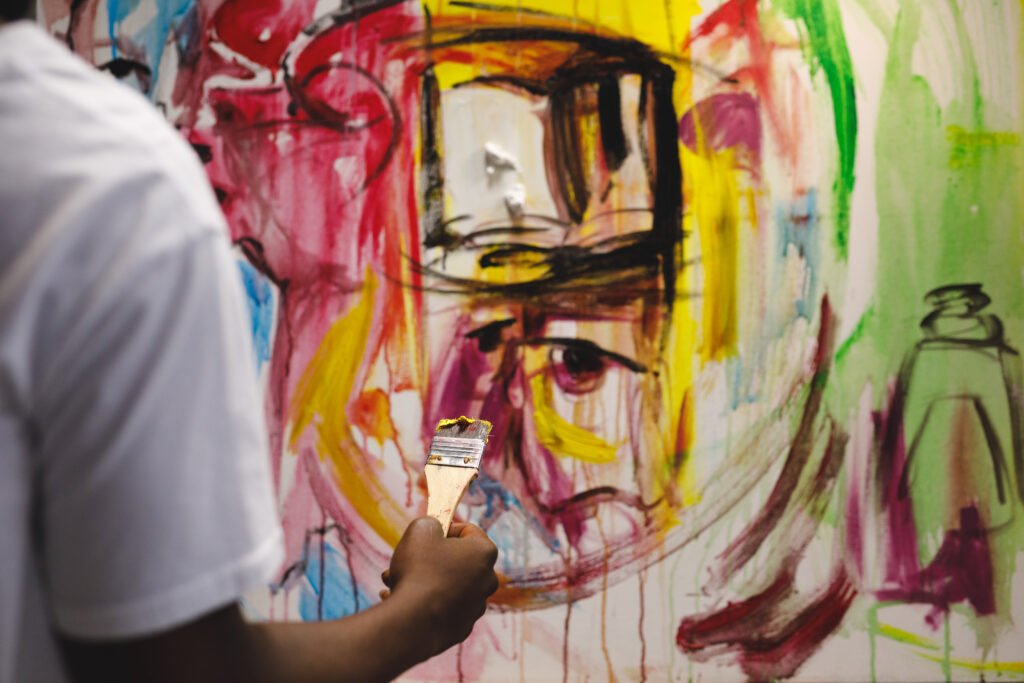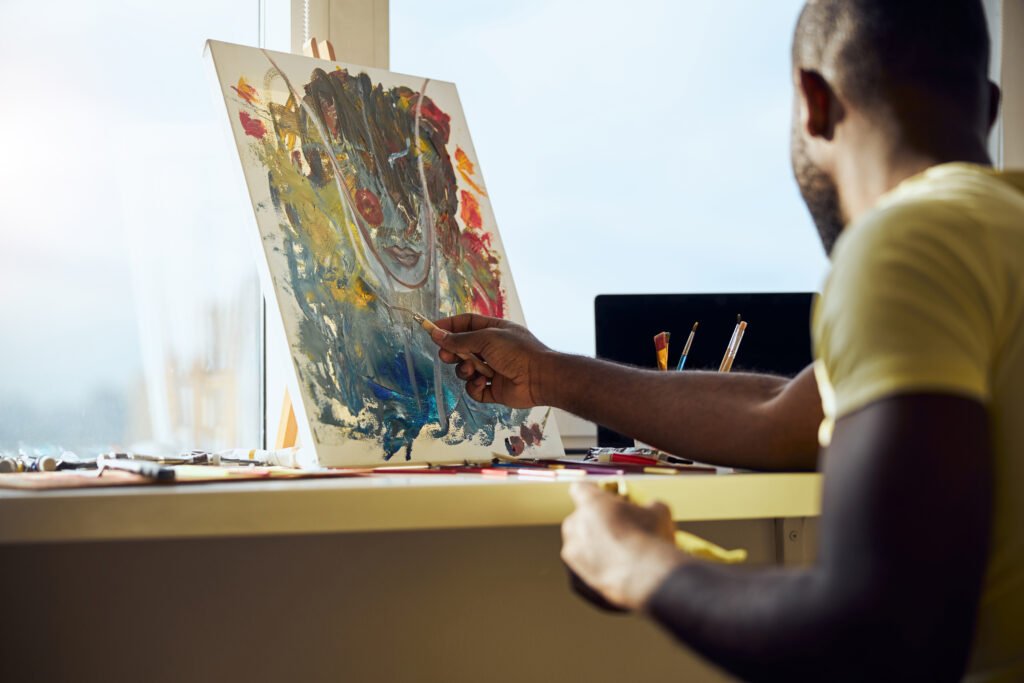In gestural painting, the artist’s movement becomes a living pulse on the surface of the canvas. So, far beyond the mere application of paint, the pictorial act inscribes bodily vibrations and tensions onto the support, creating what could be described as a “pictorial skin” where hand, arm, and gaze intertwine.

Each mark—be it a splash, a drip, a stroke of the spatula, or even direct contact between body and material—bears the signature of vital movement. For this reason, not every action painting involves a brush. Rollers, bones, metal rods, or bare hands often serve as extensions of the gesture, so, revealing that what truly matters is the body-in-action, not the tool itself.
This embodied nature lends the gestural brushstroke an often implicit erotic charge. The word “brushstroke” itself can provoke a quiet chuckle, as the brush—or the brushstroke—may be read as a pictorial phallus. It is an upright shaft that penetrates space with urgency. When the viewer approaches a dense smear of paint, a shiver may arise—not from color alone, but from a carnal trace. So, this intimate encounter happens between paint and canvas, between the artist’s body and the viewer’s gaze.
The Gestural Act as Erotic Force and Bodily Expression
At the core of gestural painting lies the stroke as an event. A single movement of pigment—applied with force or lightness—reshapes the entire visual structure. It creates a dynamic tension between figure and ground. So, colors clash or blend, and lines intersect, generating shifts in depth and rhythm.
Each element responds to another. They are like partners in an erotic dance. They are constantly feeding each other. The gestural act represents nothing external. It is the body’s own impulse. It is movement crystallized onto the surface.
The stroke’s erotic dimension gains strength. The artist invites the viewer to complete the act. The gaze does not remain distant. It surrenders to an invitation to feel matter. It allows itself to be touched by the painting. So, a mutuality emerges from this.
The painter’s gesture becomes a touch. It touches the other’s body. This body responds with its own perception. The painting is no longer a mere object. It becomes the stage for a sensitive exchange. Here, energy and desire intertwine.
Modern Art and Aesthetic Value: How Galleries and Luxury Architecture Are Embracing Modernism
Moreover, humor is born from an ambiguity. This is between the brush and a phallic organ. This humor highlights the rite’s playful character. By toying with the analogy, we learn something. Gestural painting does not exclude laughter. It does not exclude light eroticism. It includes delight in the physical gesture. So, a tension exists between the serious and playful. It is between pulsional urgency and the plastic surface. This tension keeps gestural painting alive. It keeps it open to new interpretations.
Ultimately, this “erotic brushstroke” is not limited to theme or content—it arises from the very process of creation.



